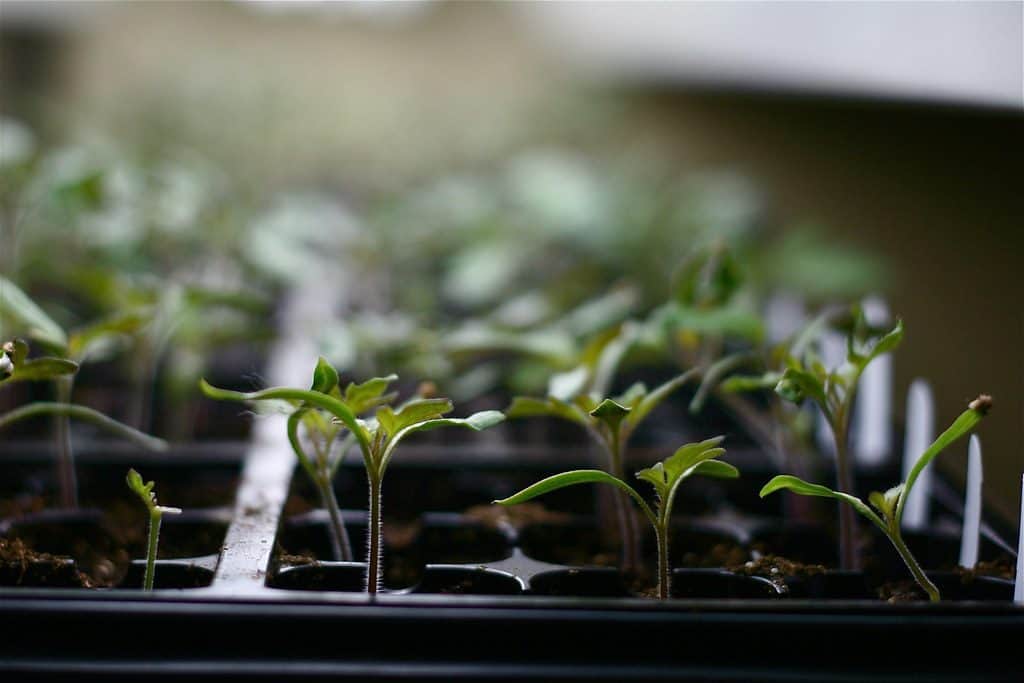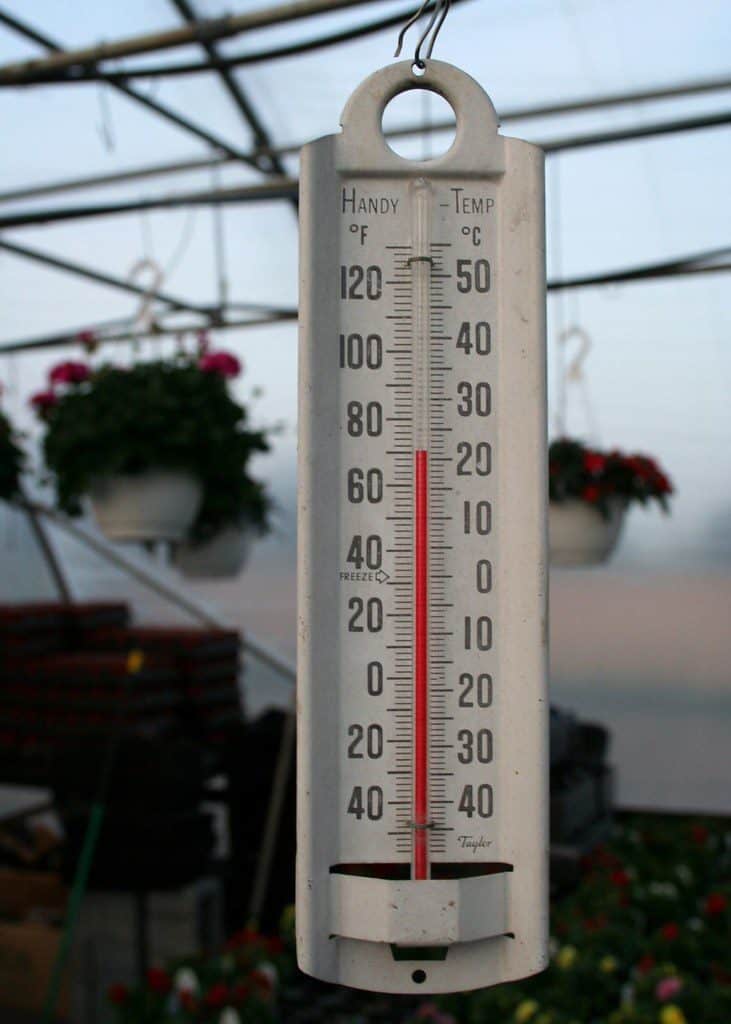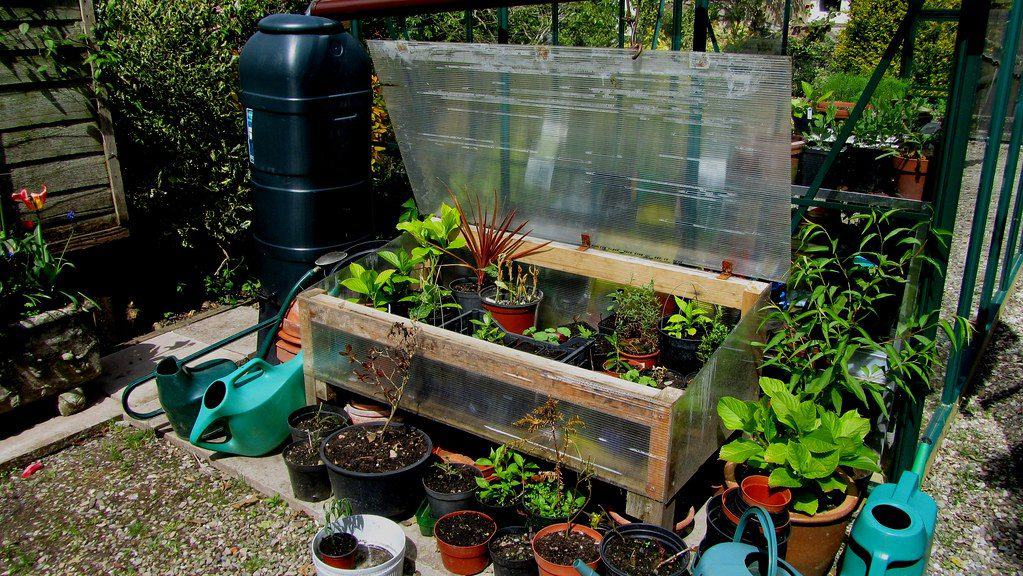Jump to:
Greenhouses are the darlings of season-extending cultivation. Such a goal becomes achievable even for beginners. However, the high cost of winter heating poses a significant challenge.
That’s where unheated greenhouse growing solutions come in. Careful planning and preparation are necessary, along with answers to FAQs provided below:
How Does Starting Seeds Work?

Starting seeds refers to the process of initiating the growth of plants from seeds. You can start seeds that sprout well during this period in an unheated greenhouse.
Begin by selecting cold-hardy seeds known to thrive in cooler conditions. Prepare a high-quality soil mix to provide nutrients and moisture for seed development. Carefully water the seeds to maintain optimal moisture levels, avoiding overwatering and drought.
Cover the seeded area with frost cloths or fleece to protect the seeds from frost. These materials act as insulation, trapping heat and preventing frost damage.
Tips: Seedlings can be placed in trays or containers filled with soil or seed-starting mix. These trays should have drainage holes to prevent waterlogging. Alternatively, you can use individual containers like peat pots or cell packs. These options allow for easy transplanting without disturbing the delicate roots.
How Do You Harden Plants for Unheated Greenhouse Growing?
Gradually expose the plants to outdoor conditions to toughen them up. This process is known as hardening off. It prepares plants for the cold and changing weather outside the garden greenhouse. Moreover, it prevents plant shock when moving from the greenhouse to the outside.
Start by placing seedlings outdoors for short periods each day. Then, gradually increase the time over one to two weeks. Choose mild days and shelter them from strong winds and direct sunlight. During winter, you can still harden plants off by selecting milder days or using a DIY cold frame.
Why Do I Need a Thermometer?

You need a thermometer to monitor the temperature inside your unheated greenhouse. A thermometer measures the temperature, which is crucial for ensuring optimal growing conditions. Temperature fluctuations often occur in the winter and can affect this, so keep track of it.
To use this tool effectively, place it at plant height and away from direct sunlight or drafts. This position gives you an accurate reading of the temperature your plants experience. You can choose from various types, such as digital or analogue, based on your needs and budget.
Are Cold Frames Worth Considering?

Yes, cold frames are worth considering. A cold frame is a low, bottomless box with a clear lid that acts like a mini wooden greenhouse. It provides protection from harsh weather while allowing sunlight to reach the plants.
To install, place it in a sunny spot with good drainage. Position it with the lid facing south to maximise sunlight exposure. Make sure to secure the lid during windy weather to prevent damage. With proper placement and maintenance, a cold frame can be a valuable asset for your garden. It can allow you to extend your growing season and protect delicate plants from frost.
What Are the Ideal Plants for Unheated Greenhouse Growing?
The ideal plants for unheated greenhouse growing include:
- root vegetables
- leafy greens
- herbs
- flowers
- certain fruit trees that thrive in cooler temperatures
Root vegetables like carrots, radishes, and turnips are well-suited for unheated greenhouse growing. Plant them in well-drained soil and maintain consistent moisture levels.
Leafy greens such as lettuce, spinach, and kale are also excellent choices. They prefer cooler temperatures and can tolerate frost. Plant them in containers or directly in the ground, and provide enough sunlight and water.
Herbs like parsley, cilantro, and chives are great for winter growing, too. They require minimal care and can withstand colder temperatures. Plant them in pots or the ground, and ensure they receive sufficient sunlight.
Flowers such as pansies and violas can add colour to your small greenhouse. Plant them in containers or flower beds, and protect them from frost with row covers or frost cloths.
Fruit trees like dwarf varieties of apples, cherries, and figs are also fantastic. Choose cold-hardy varieties and provide proper spacing and pruning to encourage healthy growth.
Overall, give them enough sunlight, water, and protection from frost. Look after them well, and you can have a thriving garden in your unheated greenhouse, even in winter.
Round-up
Greenhouses are great for extending the cultivation season, even for beginners. Unheated greenhouse growing is a cost-effective solution, but it requires careful planning. By following the tips provided in the FAQs, you can have a successful winter garden. With preparation, you can enjoy gardening all year round, not just in the frosty period.
If you’re thinking of investing in one, check out our selection of greenhouses for sale.
Not sure which one to buy? Our greenhouse buying guide has everything you need to know.
If you have any further questions, contact us and don’t hesitate to give us a call at 01909 768840.
Moving on: How to Start a Garden Greenhouse
Shop Greenhouses









